Rear I/O
The rear I/O features:- PS2 keyboard and mouse
- Six USB 2.0 ports
- Two eSATA ports
- One 6-pin Firewire port
- Optical and RCA digital S/PDIF
- Two RJ45 Gigabit Ethernet ports
- Six 3.5mm analogue audio jacks supplying 7.1 channel High-Definition surround sound as well as microphone and line-in.

BIOS
The memory timings in the Advanced Chipset Features are per-channel configurable, and Foxconn separates a quick look on the main page from the detailed adjustments in the sub-menu. The sub-menu list is certainly extensive and clearly displays what the current settings are (as well as what you're selecting), but lacks an optimised use of space. Standard AMD memory options can also be changed from the other sub-menu, and slightly strangely Foxconn has decided to set Unganged memory as default.
All the PCI-Express slots have a manually configurable width (x1-x16 for #1-2 and x1-x8 for #3-4) and can even be assigned a specific wattage through the slot - so if you're overclocking the the PCI-Express bus, adding extra juice can benefit.
The Fox Central Control Unit is the centre for overclocking and tweaking - it houses the Advanced Clock Calibration used on the new SB750 to help improve Black Edition overclocking. The voltages are quite simple under 790FX northbridge, memory, HyperTransport and CPU PLL, however there is no CPU-memory controller voltage or southbridge voltage and the voltages included are not very acute in some places - for example the memory voltages jump from 2.22 to 2.27 to 2.33V which are significant.
The CPU core voltage is also unnecessarily convoluted and instead of actually having an exact voltage, it goes up in steps that have no association with the amount of voltage you're using: 0-1-2.. etc. This means you have to calculate the voltage by applying a formula: default CPU voltage (assuming you know it) x core stepping multiplier value x 0.024V. So a 1.3V CPU with a 3x multiplier stepping will have a total CPU voltage of 1.372V.
Another sub-menu in and we have the Fox Intelligent Stepping which houses the CPU-NB HyperTransport link speed that very usefully correlates the multiplier with an actual MHz rating, however if you change the CPU reference HT value, Foxconn doesn't report the northbridge clock changing with it. Foxconn does include a southbridge frequency setting though which is something new; however, the CPU multiplier is determined by the very core CPUFID and CPUDID ratios. For hardcore enthusiasts this shouldn't be a problem - apply the formula and drop in a number, but anyone even remotely out the loop will look at this and instantly get confused, especially as the FID ratios go up into hex values!
The ratio is determined by CPUFID + 16 divided by two to the power of CPUFID. This combination allows fractional multipliers and some really precise core speeds if you're trying to eke the absolute most out of your processor.
There's very little in the way of power management options and the fan regulation is extremely simple at best - simply an "on" or "off" state for the "Smart Fan". Foxconn does not include BIOS profile saving or an in-BIOS flash utility like others either.

MSI MPG Velox 100R Chassis Review
October 14 2021 | 15:04


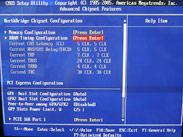
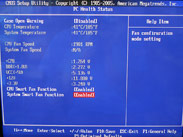
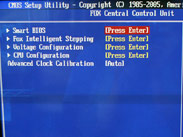
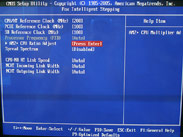
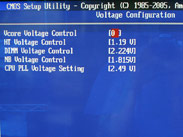
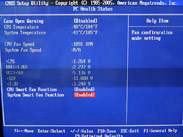







Want to comment? Please log in.